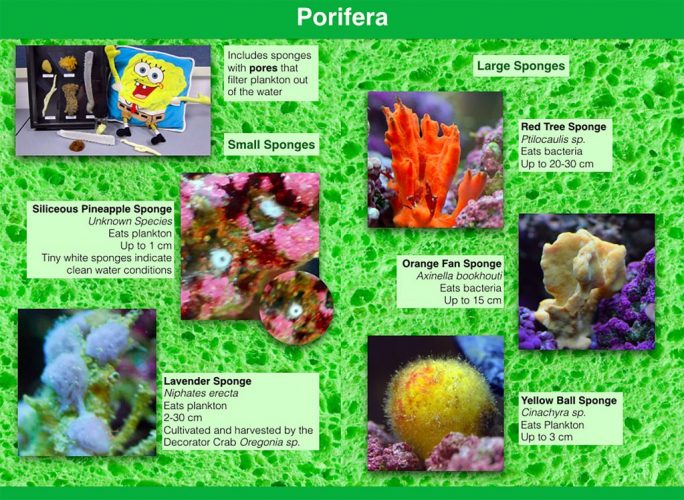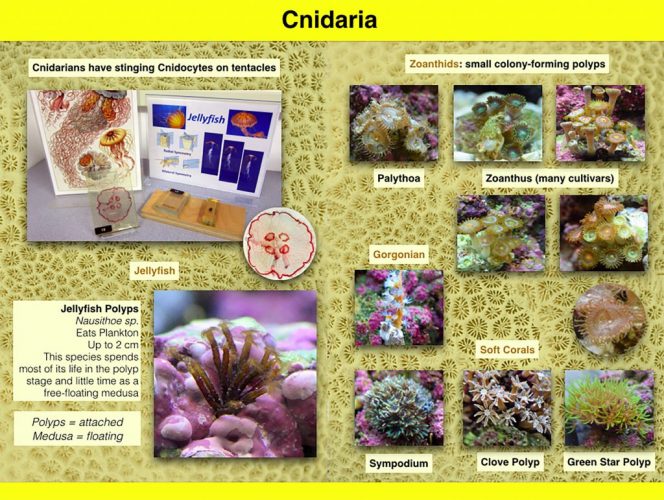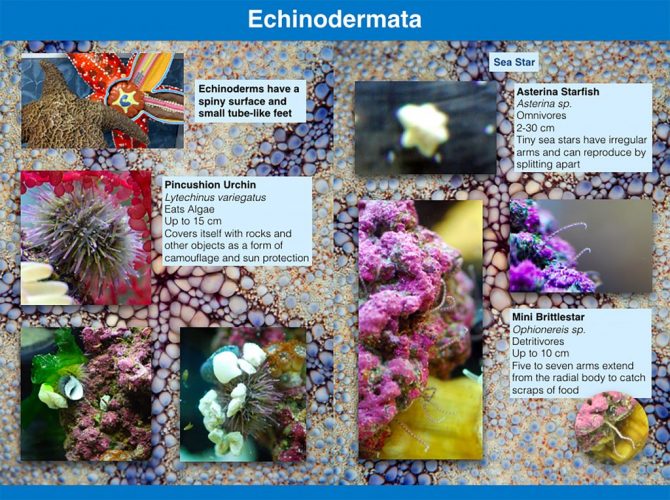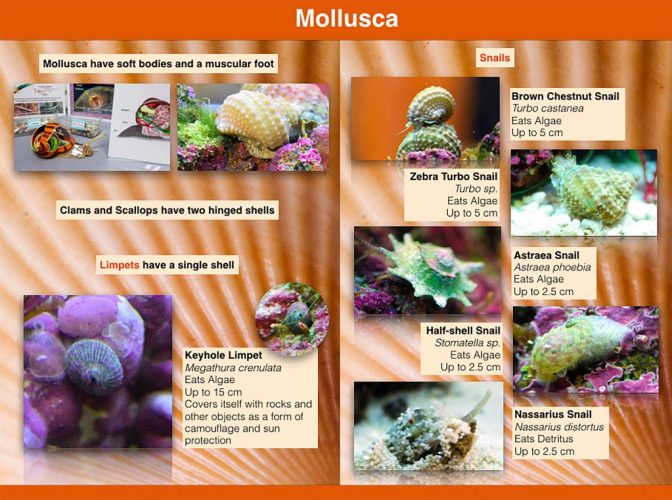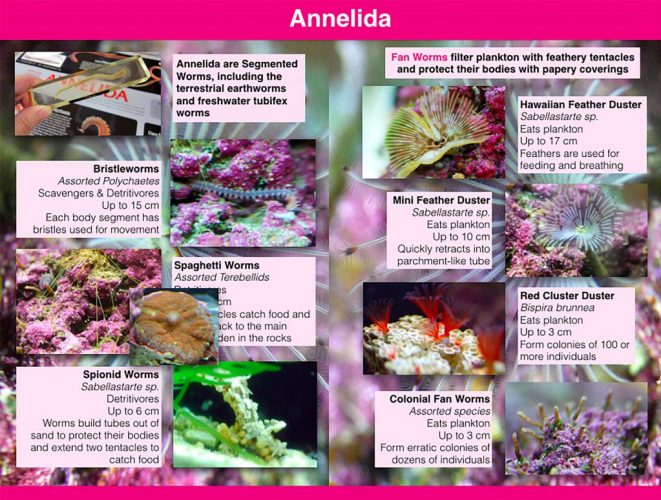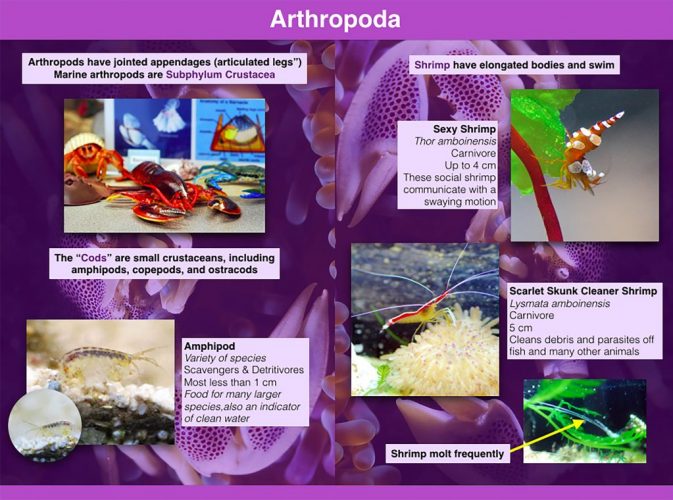
Marine Invertebrates
Marine Invertebrates
Invertebrate phyla are well-represented in oceans, the location where life originated.
Learning Objective: List examples of organisms in several marine invertebrate phyla, including their distinct structures and behaviors.
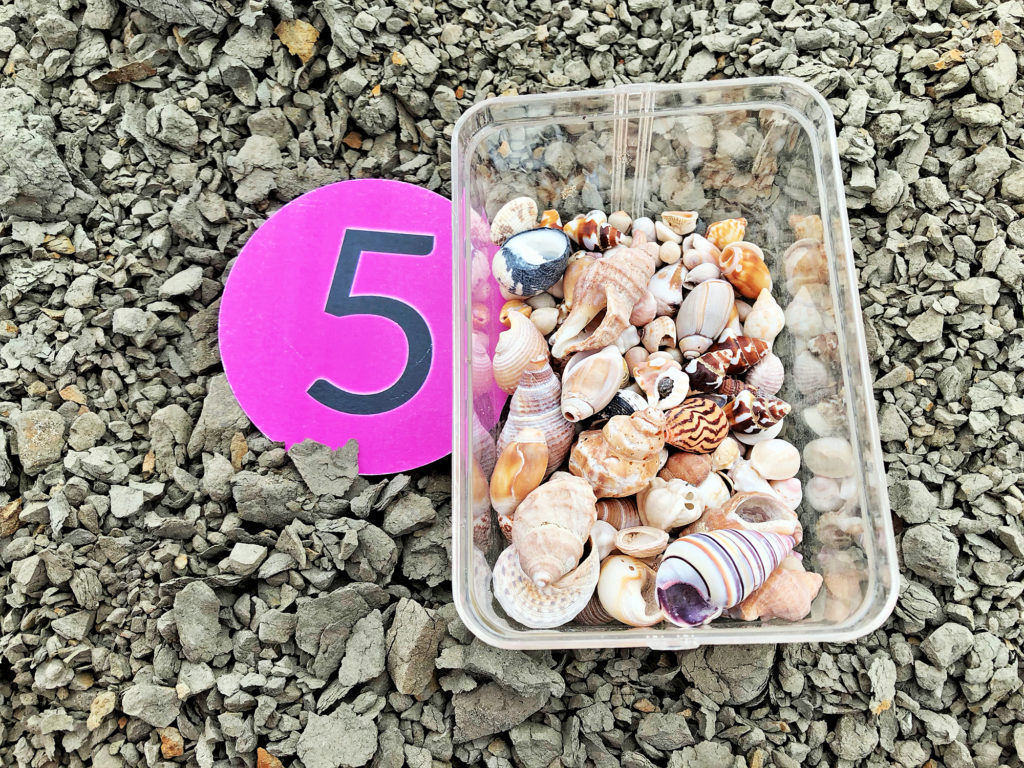
Whether you are exploring a tide pool along the coast, snorkeling in a coral reef, or setting up a saltwater aquarium at home, marine invertebrates are the diverse and attention-grabbing animals of ocean habitats.
This video introduces marine invertebrates you are likely to encounter.
Select the tab of each invertebrate phylum for additional information
Poriferans
Phylum Porifera
Porifera (pronounce: pore-if-er-a) are commonly called the sponges. These are structurally simple animals with no distinct organs. Porifera means “pore-bearing,” and the pores are openings through which water and the microorganisms they eat enter, and wastes leave.
One of the habitats that features easily accessible marine invertebrates are tidal pools: rocky areas along coasts that hold water and organisms at low tide.

On the Oregon Coast, sandy shores alternate with rocky tide pools. Cape Perpetua is a popular destination with a tourist center, interpretive signs, and volunteers.
These are two different views of the tidal pools and their organisms.
From standing height, sea anemones are visible in this tide pool. Anenome are classified in Phylum _____ and have stinging cells called ___________.
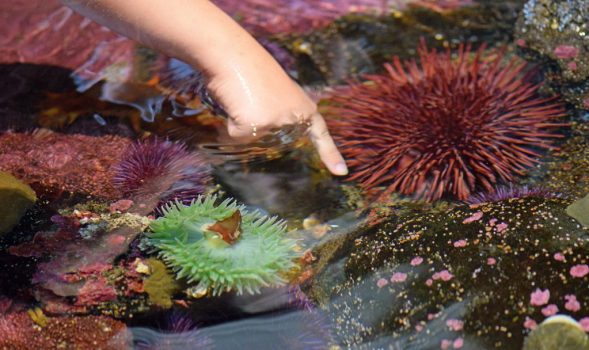
The urchin to the right of the hand is classified in Phylum _____. Species in this taxa have _____ skin.
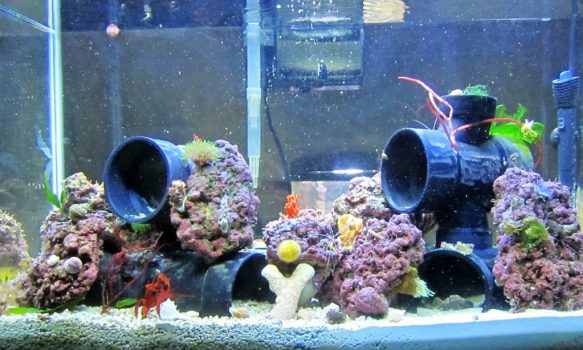
When people set up a saltwater aquarium, it is usually warm water and stocked with animals found in coral reefs, including a variety of invertebrates. This tank was set up about 18 months ago with coral taken from other tanks, what is called “live rock.” It speeds up colonization of organisms in the tank, including the bacteria necessary for nutrient cycling. Many “hitchhiker” invertebrate animals arrive on these rocks.
For this guide’s media piece, you will be observing the invertebrates that now populate this tank.
Start Your Media Assignment here
When we head to aquaria or marine destinations, it is often easier to focus on the large vertebrate animals. For this media piece you will be focusing in on the smallest animals that make up the vast bulk of marine animals.
From the videos provided below, find five different invertebrate animals.
-
provide the letter of the video you found the animal in (a, b, c, d, e, and/or f). You can use all of the videos or just a few.
-
include notes on the animal, this could be a loose sketch and/or written notes.
-
identify the phylum the animal is classified in and the most likely common name. For example: you may find a brittlestar classified in Phylum Echinodermata. We have provided a photo guide below to assist with identification.
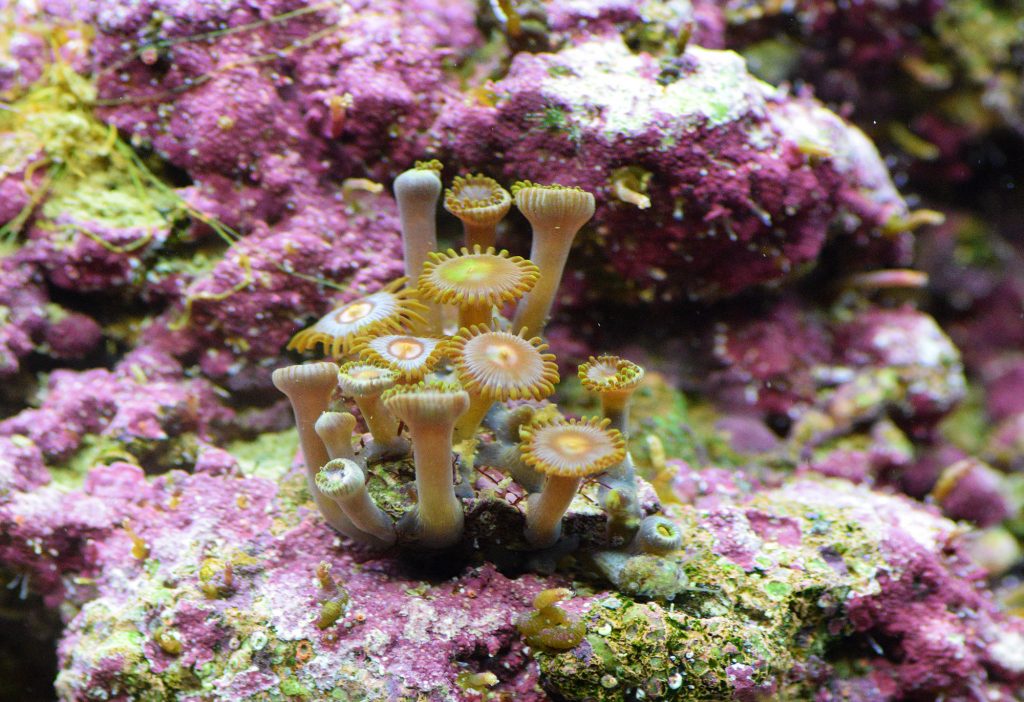
To summarize, you are submitting an identification of five different types (species) of marine organisms you find in the videos, including (a) the letter of the video it was in, (b) brief notes, and (c) its Phylum and common name.
You can use this key to help with identification.
These are a few of the species we’ve found in the tank, organized by Phylum.
These are the videos you are using for the media piece. Each video was taken in a different part of the tank.
You are looking for and identifying five different invertebrate animals. There are multiple species in each video.
You may want to expand each video and it may take a few minutes to see the animals.
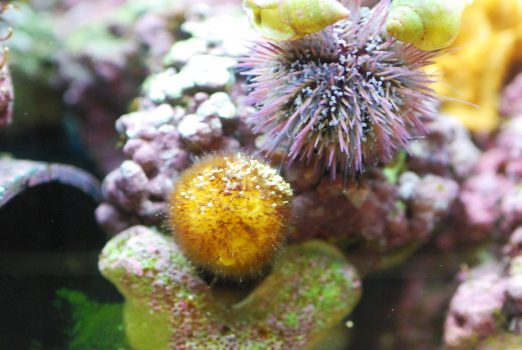
The tank in these videos is 18 months old. It was stocked with “live rock” from other tanks and a variety of small corals.
Tank Parameters:
- 30 gallons,
- 77 degrees Fahrenheit
- 10% water change weekly
- Food added: phytoplankton for corals & pellets for clownfish and shrimp
If you are interested in additional information on marine invertebrates, we have included more on this guide’s resource page.

